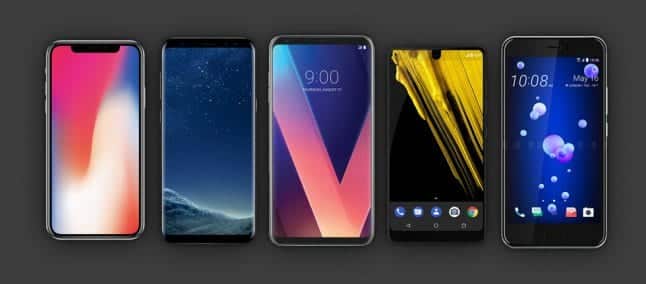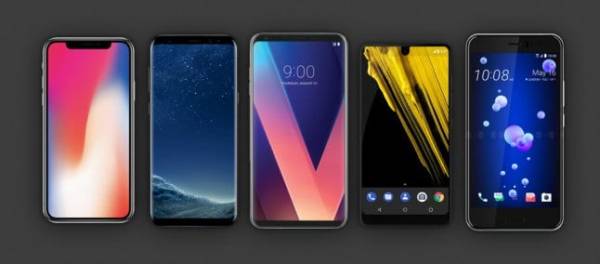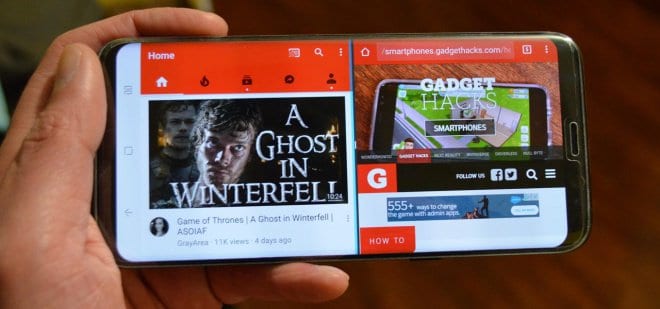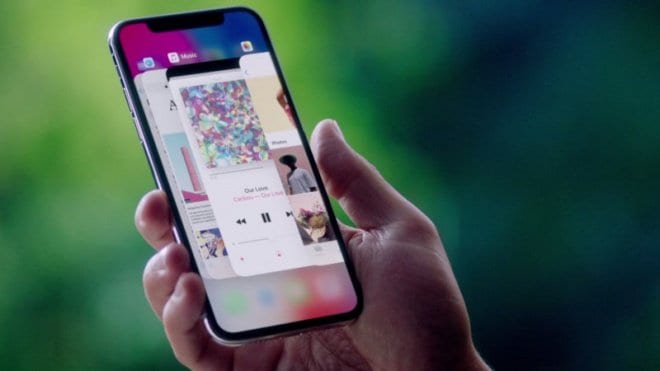It’s too early to state categorically that the 18 – 9 aspect ratio has come to stay on smartphones. Yes, today almost every major manufacturer adopts this screen format in their flagships and already has some middlemen with that aspect. And probably next year we’ll have even more of them.
Page Contents:
So discarding the possibility that 18 – 9 screen will be abandoned overnight and imagining that more and more smartphones will adopt this screen format, it’s time to ask ourselves – what are the advantages of these screens that bring a side that is twice the size of the other?
Firstly, if you still do not quite understand the difference, come on. Conventional 16 – 9 displays, which is possibly your television’s and your computer’s monitor – if you have these devices – they are measured diagonally.
That is, the 5.5 inches of a smartphone represents the size of the top left to bottom right or top right to the bottom left of the screen. If you measure the size of the width and height, you will find something like 4.79 “and 2.69”.
The 18 – 9 screens continue to be measured this way. But the sizes found in the same measure above would be 4.92 “and 2.45”. That is, the height is increased while the width is smaller. This brings at least one disadvantage – the screen area gets a bit smaller. But let’s see the positives aspect of the 18 – 9 ratio screen.
Usability
An 18 – 9 screen smartphone is much more comfortable to use than a 16 – 9. It’s easier to hold on the hand, and as companies are taking better advantage of the front to leave virtually screen only, the displays will increase in size (again). But without increasing the discomfort to hold with one hand.
Holding the device “straight”, it becomes thinner and taller. It’s harder to get to the top of the screen to pull notifications, for example, but it’s still possible with one hand. And there are other solutions, such as Samsung, that allows you to draw notifications from any point of the display on the home screen.
In short, the devices will bring bigger screens but will be more compact. Much more comfortable to wear. Your hand does not hurt at the end of the day – trust those who use 18.5 – 9 a few months ago.
Multitasking
Multitasking is possible on 16 – 9 screens, but gets much more comfortable on an 18 – 9 screen when the screen is small. Basically, you have half the display for each app. There are two squares on the screen, each showing a different application. You can also use landscape or portrait mode.
Productivity
Although the screen area is smaller, more content fits within the device. A 5.5-inch smartphone has 1080 x 1920 pixel resolution at 16 – 9, and 1080 x 2160 pixels at 18 – 9. Without prejudice to the quality of the content display.
It has more space for text with an image. The social networking posts occupy the space better, and you see much more at once on the screen. You can read larger texts without having to slide the screen all the time. And it fits more content when the keyboard is on the screen, better for who writes.
And of course, there is also more room to draw, illustrate, colourize. Artists of all kinds will benefit from a more spacious and more portable screen.
Content consumption
Here, take advantage of what we have already mentioned above. With more space for content, the consumption of this content is much better. More text to read on the screen. More room to split text and image. More space for timeline content on your favourite social network.
But here comes a further disadvantage. Most videos still cannot take advantage of this new ratio. Most of the video content available today, on the internet or television, is 16 – 9. Netflix and Amazon already produce series and movies in 18 – 9, but it’s still little.
And then, when watching a video in full screen, you have two options – letterbox or cut a part of the video to fit the screen, occupying edge to edge. In the letterbox, there is a black space on each side of the video. In the other option, you lose content.
The industry trend is to produce content in 18 – 9, so much that Netflix and Amazon already adopt this ratio in some of their productions. But this is still new. DSLR and smartphone cameras only bring recording options in 16 – 9 or 4 – 3, basically.
That is, content that is not produced by major producers will still be in 16 – 9 for a long time. And we’ll have to learn to live with the black bars on our phones when consuming videos. Or lose some of the content.
Anyway, the advantages are still greater than the disadvantages. And, let’s face it, it’s not the end of the world to have the black belt on the sides of the video. They are invisible on good quality screens, especially if the colour of the smartphone is black.
But I’d like to hear from you, dear reader. What do you think of the new standard 18 – 9 that is in the trending in major smartphone industries? Do you think it’s an irreversible trend or do you still believe that something can reverse this change? Tell us people in the comment field.





In my opinion i dont like 18:9 displays. 16:9 is still the best. Multitasking is not a major thing . In landscape multitasking, 16:9 displays are better than 18:9 . Only in portrait mode the latter gets its advantage. Having a lengthier display will be quite difficult for one hand phone users(like reaching the top of the screen). Talking about videos and film most of them are suited for 16:9 displays only. Maybe they will soon produce videos in 18:9 format but it might still make everything look “fatter”. The only reason i dont like samsung s8 is because of its 18:9 display…maybe companies should make their flagship phones in display variants too. That would be cool. Also in my opinion companies should aim for better displays (like super amoled screens or bezel less phones),or they should innovate their technologies like reducing the phone dimension to upto their max extent and not just changing display resolutions.
Bigger phone is a bigger phone. Producing bigger screens in 18:9 displays will make it easier to hold and use but wts the point of just increasing length keeping the breadth small. Does that even make you feel its a bigger phone?
– Multitasking IS a major thing! I have constantly used, for years now, 2 apps side by side. Now with a taller screen, each of the 2 apps gets more space, regardless if you hold the phone in portrait or landscape.
– Cinema doesn’t use 16:9. In fact they have used 18:9 for a very long time…